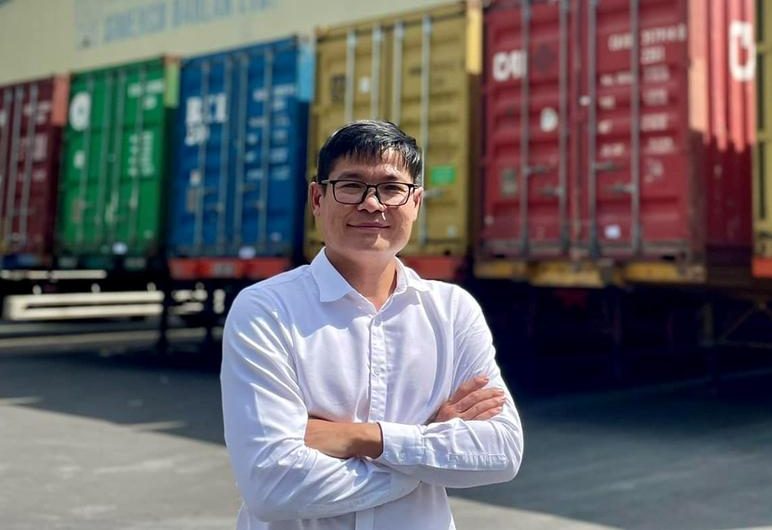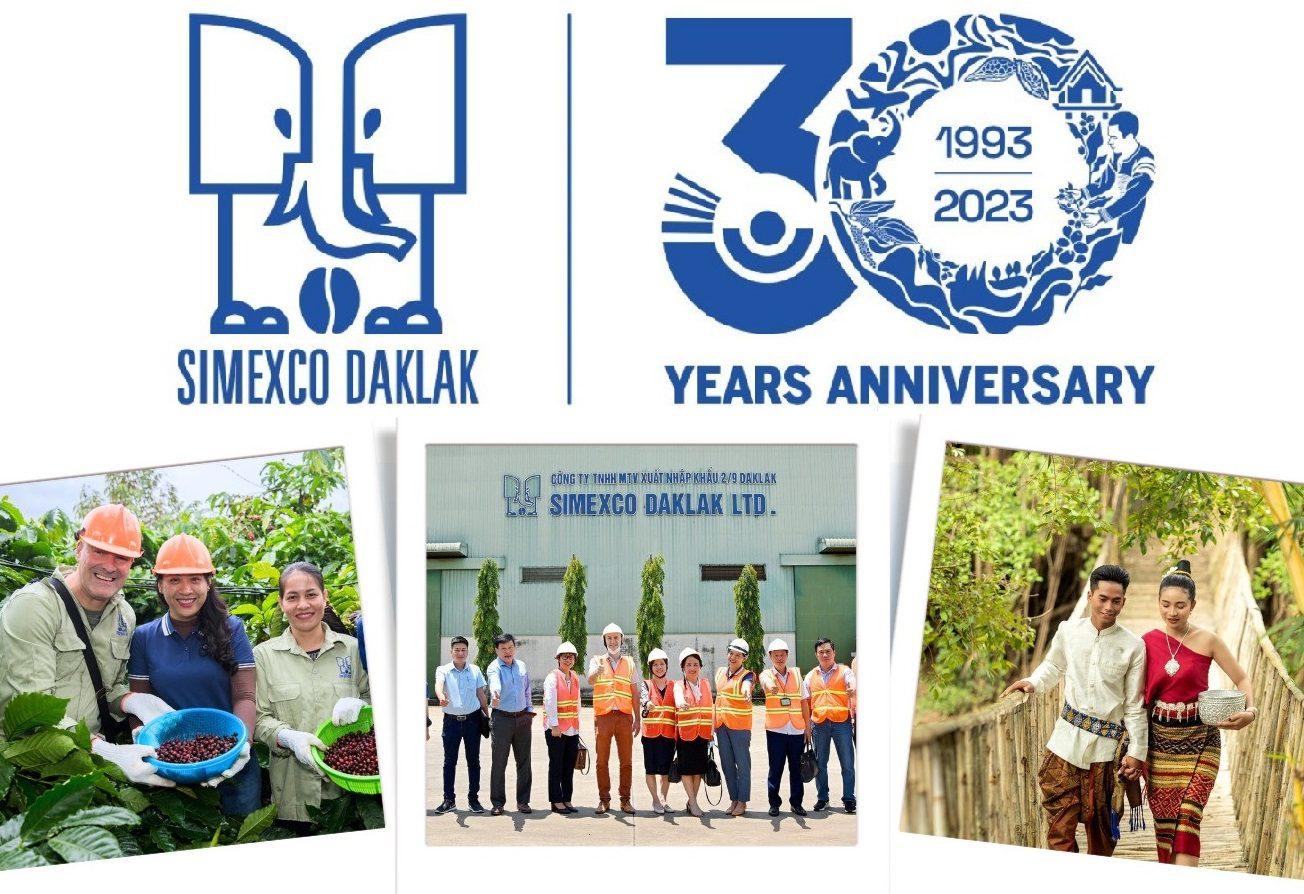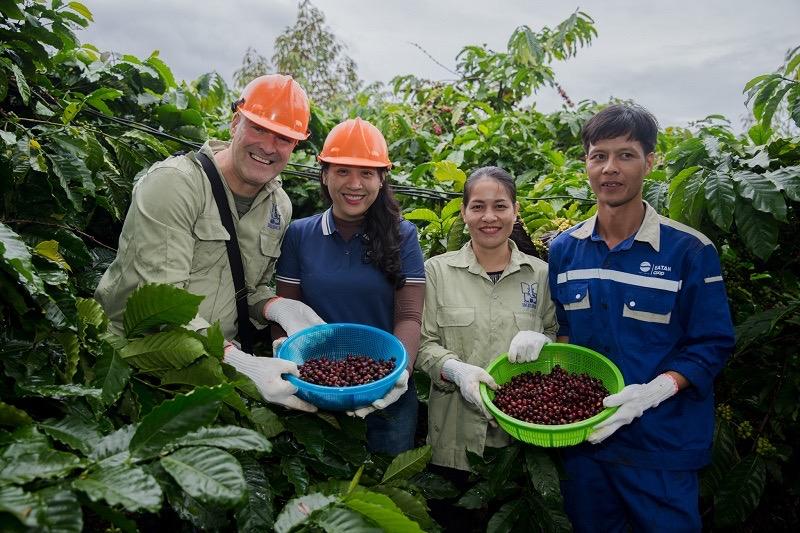
Vietnam could export $10 billion worth of coffee in 10 years: Simexco Dak Lak CEO
As a gateway from Asia to the world, Vietnam could earn $10 billion from coffee exports in the next 10 years, said Le Duc Huy, CEO of Simexco Dak Lak, one of the country’s leading coffee producers.
With 30 years in the coffee export sector and a leading producer in the country, what strategies has Simexco Dak Lak pursued to achieve its current results and position?
When the company was established, Vietnam’s economy was closed and still under U.S. embargo, so there was almost no market for Simexco Dak Lak. Besides, the coffee industry relies on exports, so it needs a lot of capital, with a high risk of price fluctuations but low profit margins. The market at that time was struggling. As coffee plantations in Vietnam made up a very small area per capita (less than 1 hectare per person), it was extremely difficult to control or improve quality. In general, the coffee industry at that time was primitive compared to other industries.
However, we were always aware that we must understand the needs of the market to develop our products. We clearly determined that we would focus on Robusta and reach the number one position globally. Therefore, the quality of coffee had to be the highest and most stable in the world.
Firstly, in the production process, the company defined that quality improvements must come from farmers, so we should work directly with them. Now we have developed a network of 40,000 farmers.
Secondly, we also invested in the most modern processing equipment to provide quality products for the world’s roasters.
In the 21st century, the requirement for sustainable development with a balance among economic, social and environmental factors will be a new big challenge for all individuals and organizations. However, we don’t think of it as a challenge but a responsibility.
In the past 15 years working with farmers, we have always put forth a set of criteria to ensure environmental protection, such as limiting pesticides and chemicals, planting shady trees, saving fertilizers and irrigation water, and reducing emissions…
In 2022, amid economic difficulties, the company still achieved impressive business results with revenue of VND6.48 trillion ($273.75 million) and export turnover of $242.87 million. It targets VND10 trillion ($422.4 million) in annual revenue in the next five year, a record level since its inception. So, what is Simexco Dak Lak doing to reach this goal?
With the potential of Dak Lak province and the Central Highlands in general, as well as Vietnam’s favorable position in terms of logistics as a gateway to the world, local agricultural products, especially coffee, see much room for development. The country’s coffee export turnover could reach $10 billion in the next 10 years. We think that Simexco must transform faster to meet that trend.
Currently, the company mainly focuses on processing green and unroasted coffee for roasting corporations around the world. However, to improve value, in addition to what we are doing with green coffee, we are also investing in coffee roasting and dissolving plants. In the next five years, the company will put into use a system of roasting and dissolving plants, and increase its green coffee processing capacity by 30%.
Besides, we will continue to expand business activities in the fields of logistics and industrial parks. Currently, we are cooperating with 40,000 farmers and the number is expected to hit 80,000 in the coming time. We will expand our supply services, large-scale model fields and logistics services for farmers for more economical and flexible operations and better response to digital transformation and green transition.
In particular, the firm is also promoting the tourism segment to attract more tourists, helping them understand the culture, beautiful landscapes and people of the Central Highlands.
Your company is now one of the leading coffee exporters that ships products to more than 100 countries. Could you share your experience in conquering demanding markets around the world?
Currently, Vietnam’s coffee industry shows weak communication and marketing. In international exhibition booths, there are only coffee brands from Indonesia, India, Myanmar and Laos. Building Vietnamese coffee brand is a great effort by businesses. I hope to see more efforts from industry associations in the near future.
Simexco always tries to export or sell what customers need. In the past, we only sold products through our representative offices in Ho Chi Minh City. Over the past 13 years, we have been “knocking on the door” of each roaster to offer products with the determination to diversify Robusta products. The company convinced them to switch from using other countries’ Robusta to Vietnamese coffee by proving the quality and stability of Vietnamese Robusta.
For example, in the Japanese market seven years ago, Vietnamese coffee only accounted for 20% of their total Robusta consumption, but now the figure has increased to over 70%. For Simexco Dak Lak, our biggest customer now is Japan, making up about 25% of total export volume.
After the U.S. National Oceanic and Atmospheric Administration (NOAA) forecast the appearance of El Nino, coffee prices surpassed all domestic and world records. Amid scarce supply, what is the outlook for coffee prices and how is the company responding to this extreme weather?
If this forecast is true, it will seriously affect supplies, so coffee prices will likely be determined by supply and demand. And if the weather in producing countries like Brazil and Vietnam is affected by El Nino in the last six months of this year, supplies will be insufficient.
However, the current price of VND70,000 ($2.96) per kilogram is quite high compared to the maximum level roasters pay. They will move to other countries to replace supply sources, or switch to other product lines of lower quality. Therefore, coffee prices are likely to be adjusted in the future.
Simexco Dak Lak, after a successful year in 2022, realized that the socio-economic situation in 2023 is changing rapidly so it plans to export about 110,000 tons. However, fortunately, from October 2022 to June 2023, the company completed this target and the export volume could reach 125,000 tons. So 2023 could be the most successful year in the firm’s 30-year journey.
In the first six months of 2023, Vietnam’s coffee export turnover surpassed $2 billion. Will coffee exporters benefit from the current price hike?
I think this year’s coffee export target of $4 billion will be difficult to achieve, because current output has dropped by about 15%. Therefore, despite high prices, Vietnam’s coffee export revenue may reach only $3.7-3.8 billion this year.
Export businesses buy coffee from farmers and then sell it on immediately, so there is no speculation. High prices mean higher production costs, so exporters need to do better and work more efficiently amid a fierce competition. In previous years, a business had to pay only about VND5-6 billion ($211-253 million) in monthly financial costs but some months this year the figure hit VND13-14 billion ($549-591 million), 2.5 times higher. Therefore, even with the current record high prices, exporters will not benefit much.
How does Simexco cooperate with cooperatives and coffee farmers in Dak Lak to approach sustainable farming?
Sustainable development is the responsibility of each individual and organization. In the 20th century, people took too much from the environment and social justice in exchange for economic growth. Of course, now if we want sustainability, we must return that balance. This is the responsibility of every organization and individual. We must do it sooner rather than later, otherwise we will not survive.
Therefore, early on, we developed a set of internal criteria for sustainable development. We always return the balance to the raw material areas, so that coffee trees grow stronger for better quality and more stable output, thus benefiting the company.
Source:



